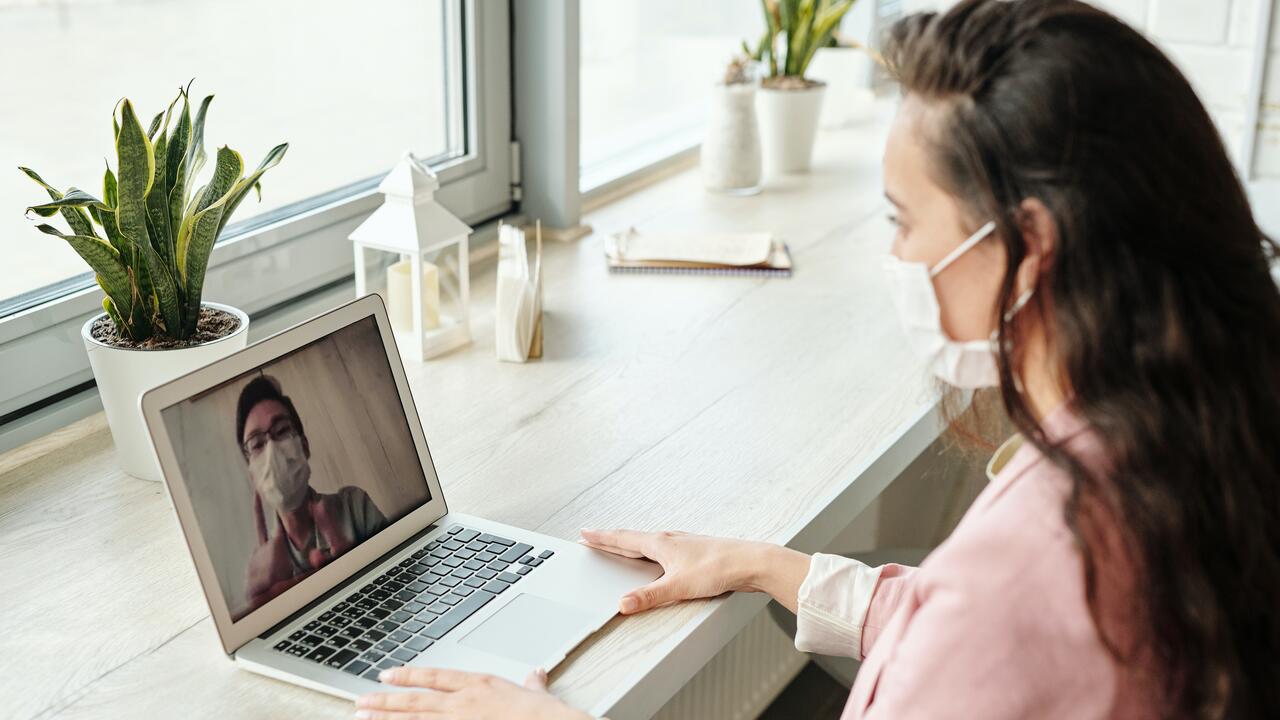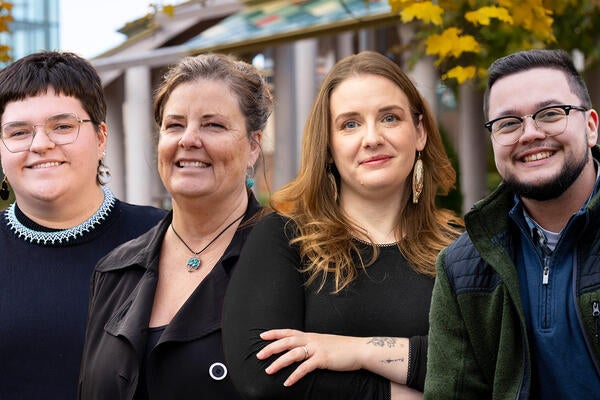
Rebooting with research: our virtual future
Preparing to reboot from the COVID-19 lockdown

Preparing to reboot from the COVID-19 lockdown
By Janet Janes Office of ResearchCOVID-19 has had an immense impact on the way people interact and connect with each other, particularly through work. It’s likely the current normal of virtual workplaces will continue to evolve after the pandemic ends.
“The future is really going to change,” Andrea Kerswill said, director at Innovation & Scotiabank FactoryU, Scotiabank. “It’s going to change, in fact, for the better. Instead of the office as a place that you go to for everything, it’s going to be the place that you go to for some things — meeting with customers, socializing, collaboration and creativity.”
Kerswill was speaking at Rebooting with Research: Our virtual future, the final of six panels in The Post-COVID-19 Reboot, hosted by the Gateway for Enterprises to Discover Innovation (GEDI) at the University of Waterloo.
“I think we’re really going to have to be focused and intentional about our time. I know that we’re like that now, but it’s going to change. When we plan a meeting, we need to need to think about who needs to be there, why and how, and what the outcome of the meeting is meant to be.”
When the crux of the pandemic struck in March, many Canadians working in a traditional office or other workplace quickly pivoted to working from home in an urgent approach to flatten the curve, which required traditional meetings and other human connections to move online.
“I think everything is going to be driven by that human connection. It’s going to be really focused on tools, software and rules,” Kerswill said.
Those rules and tools include clarity on working agreements, flexible and overlapping hours, along with an understanding of when to use instant messing, phone calls or online communication.
While the COVID-19 crisis has been the impetus for this growth in the use of virtual connections, challenges are bound to arise.
Ray Simonson, co-founder and chief executive officer of Glove Systems, expects that operating business in the future will require a hybrid approach. Personal contact is a key element of sales and convincing customers to buy from a new supplier they haven’t met — this could be challenging.
“I think the challenge we will need to solve is getting people to meet each other and talk to each other when they see each other very rarely or never,” Simonson said.
One online area that has increased due to the pandemic is grocery shopping.
Jim Wallace, professor in the School of Public Health and Health Systems, wonders how filling a virtual shopping cart versus a physical cart where shoppers can see the ratio of fruits and vegetables to junk food, will easily affect a person’s overall health. Reading labels can be challenging in the store but more challenging online.
“I think there’s a lot of research there and a lot of questions about what this means for our long-term well-being,” he said.
The adaptation to a virtual world has affected every segment of society including arts and culture, which has responded to the pandemic by digitizing culture,” said Aynur Kadir, professor of Digital Media, Communication Arts and a member of the Games Institute.
Zoos and aquariums are live-streaming online. Art galleries are making it possible to showcase artwork on a wall at home. While social media and other digital tools are being used to create a safe experience.
“I’m quite hopeful that digital technology has created new possibilities,” Kadir said.
As people adapt to a virtual world with different levels of comfort, it’s important to consider everyone’s needs in this area related to ethics and equity. With many of the current virtual options made by developers, understanding the impact it has on people (e.g., motion sickness caused by virtual reality) may not always be recognized, Michael Barnett Cowan said, a professor in the Department of Kinesiology.
All of this requires reflection and consideration in terms of developing technology to match the user, rather than the other way around. For example, a rehabilitation robot is easy to use allowing the user to focus on the action they need to perform rather than the robot.
“The time is right to start digging into harder issues and trying to do better at getting it right the first time. Rather than backpedal and fix things because we’re trying to get things out the door,” Jennifer Boger said, a professor in the Department of Systems Design Engineering. Boger is also a Schlegel Chair in Technology for Independent Living, Research Institute for Aging, and a co-chair of the Council for Responsible Innovation and Technology.
All of this requires reflection and consideration in terms of developing technology to match the user rather than the other way around so that, for example, a rehabilitation robot is easy to use allowing the user to focus on the action they need to perform rather than the robot.
“The time is right to start digging into harder issues and trying to do better at getting it right the first time rather than backpedal and fix things because we’re trying to get things out the door,” said Jennifer Boger, Assistant Professor, Systems Design Engineering, Schlegel Chair, Technology for Independent Living, Research Institute for Aging, and Co-chair of the Council for Responsible Innovation and Technology.
At one time, the primary consideration for technology was whether it’s possible. That is no longer the case, Professor Boger says.
“The whole ‘can’ isn’t really a question anymore. Yes, we can, and we can see where this technology is going really fast. But should we do it and how?”
Rebooting with Research: Our virtual future, is the final of six panels in The Post-COVID-19 Reboot, hosted by the Gateway for Enterprises to Discover Innovation (GEDI) at the University of Waterloo.
For more discussions like these, register for Waterloo’s latest Innovation Summit on Wednesday, July 22 from 9 to 10 a.m. as industry leaders explore the critical need of a resilient and adaptable workforce in the face of global disruption. Themed “Reset. Rebuild. Rebound,” join the conversation as guest speakers like Randall Lane, Chief Content Officer and editor of Forbes Magazine, seek to attract trailblazers in industry, government and research for a no-holds barred immersion into technology, disruption and emerging trends.

Read more
Here are the people and events behind some of this year’s most compelling Waterloo stories

Read more
It Started in Waterloo: An Astronaut's Journey into the Universe of Innovation, narrated by Chris Hadfield, highlights the University of Waterloo’s role in igniting innovation within the region and beyond.

Read more
Researchers awarded funding to investigate ecology, climate change, repatriation, health and well-being through cultural and historical lens
The University of Waterloo acknowledges that much of our work takes place on the traditional territory of the Neutral, Anishinaabeg, and Haudenosaunee peoples. Our main campus is situated on the Haldimand Tract, the land granted to the Six Nations that includes six miles on each side of the Grand River. Our active work toward reconciliation takes place across our campuses through research, learning, teaching, and community building, and is co-ordinated within the Office of Indigenous Relations.